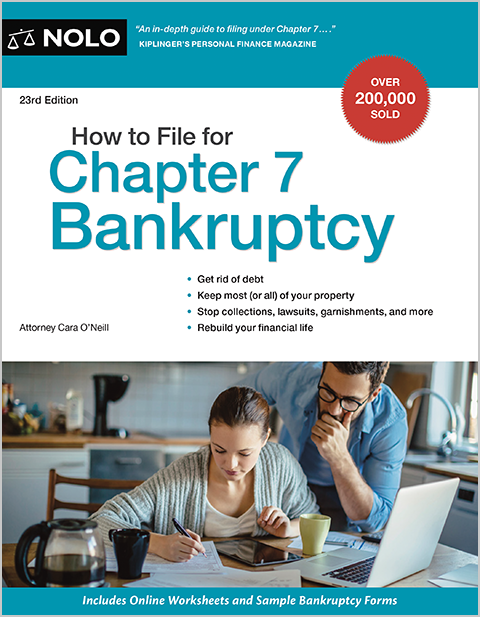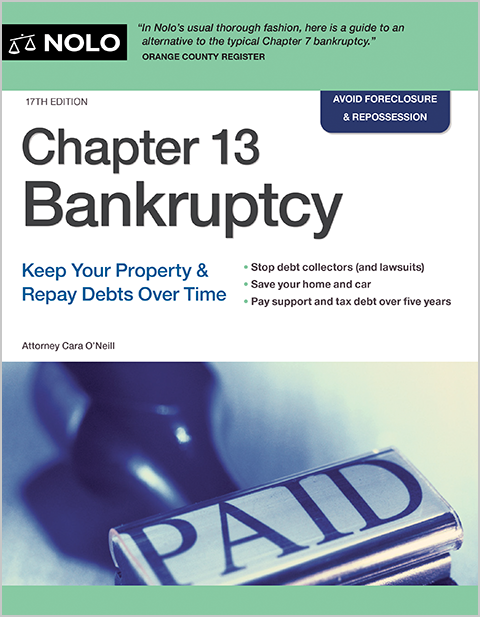Priority debts get paid first in Chapter 7 bankruptcy.
In Chapter 7 bankruptcy, priority debt is significant enough to jump to the head of the bankruptcy repayment line. Priority debt includes domestic support obligations and employee wages, and the Chapter 7 bankruptcy trustee must pay them before other commitments, such as credit card balances and medical bills.
In this article, you'll learn more about priority debt payment in bankruptcy, how priority debt payment can help debtors, and common priority debts in Chapter 7 bankruptcy. (The categories are the same in Chapter 13 bankruptcy. However, the Chapter 13 repayment plan pays priority debts in full.
How the Trustee Pays Priority Debts in Chapter 7 Bankruptcy
Most Chapter 7 bankruptcies are "no asset" cases, and the debtor doesn't have anything that the Chapter 7 bankruptcy trustee can sell for the benefit of creditors. But that isn't always the case. The trustee will review creditor claims and disperse the funds when money is available.
The trustee will pay two types of debts: priority unsecured debts and nonpriority unsecured debts. All priority debts must be paid in full before the trustee can pay nonpriority unsecured debts like medical bills, credit card balances, and personal loans.
For more information, read Types of Creditor Claims in Bankruptcy: Secured, Unsecured & Priority.
How Paying Priority Debt First Helps a Debtor
No one wants to lose property in Chapter 7 bankruptcy. But when it happens, the sting isn't quite so nasty if you have priority debts.
Why? Because most priority debts can't be "discharged" or erased in bankruptcy. You'll have to pay priority debt balances after the Chapter 7 case ends. But, because the trustee pays priority debts first, if you lose property, the sales proceeds will be applied to your priority debt first, leaving you less to pay after your bankruptcy case ends.
For example, suppose the trustee sells your RV for $15,000 and uses the money to pay toward your $20,000 recent income tax bill, which is a priority, nondischargeable debt. After your bankruptcy case, you'd owe $5,000 instead of $20,000 on your tax debt.
Find out more about keeping property in Chapter 7 bankruptcy and nondischargeable debts.
Common Priority Debts in Chapter 7 Bankruptcy
Priority debts that might come up in consumer bankruptcies include the following:
- wages, salaries, and commissions owed by an employer up to $17,150 per person earned within 180 days of your bankruptcy filing
- contributions to your employees' benefit plans rendered within 180 days of your bankruptcy filing up to $17,150
- debts of up to $8,450 owed to farmers and fishermen
- up to $3,800 in deposits made for the purchase, lease, or rental of property or services for personal, family, or household use that were not delivered or provided
- alimony, maintenance, or support
- income taxes that became due within the three years before the bankruptcy filing date and taxes that were collected or withheld from an employee (trust fund taxes); also, customs, duties, and penalties owing to federal, state, and local governmental units, and
- claims for death or personal injury (not property damage) that came about because of your driving under the influence of alcohol or drugs.
The amounts are valid from April 1, 2025, through March 31, 2028. (11 U.S.C. § 507(a) - current amounts are published in the Federal Register.) To learn how other debts are treated in Chapter 7, see Your Debt in Chapter 7 Bankruptcy.
Need More Bankruptcy Help?
Did you know Nolo has made the law accessible for over fifty years? It's true, and we wholeheartedly encourage research and learning. You can find many more helpful bankruptcy articles on Nolo's bankruptcy homepage. Information needed to complete the official downloadable bankruptcy forms is on the Department of Justice U.S. Trustee Program website.
However, online articles and resources can't address all bankruptcy issues and aren't written with the facts of your particular case in mind. The best way to protect your assets in bankruptcy is by hiring a local bankruptcy lawyer.
|
|

